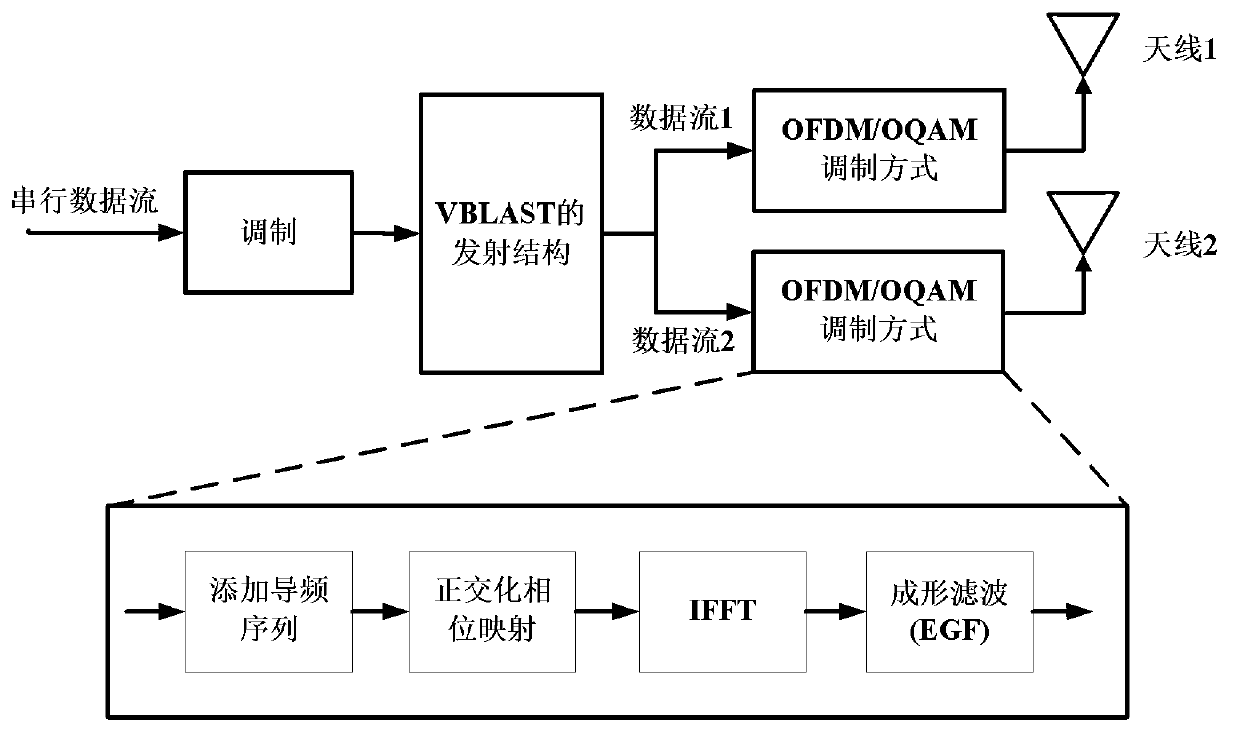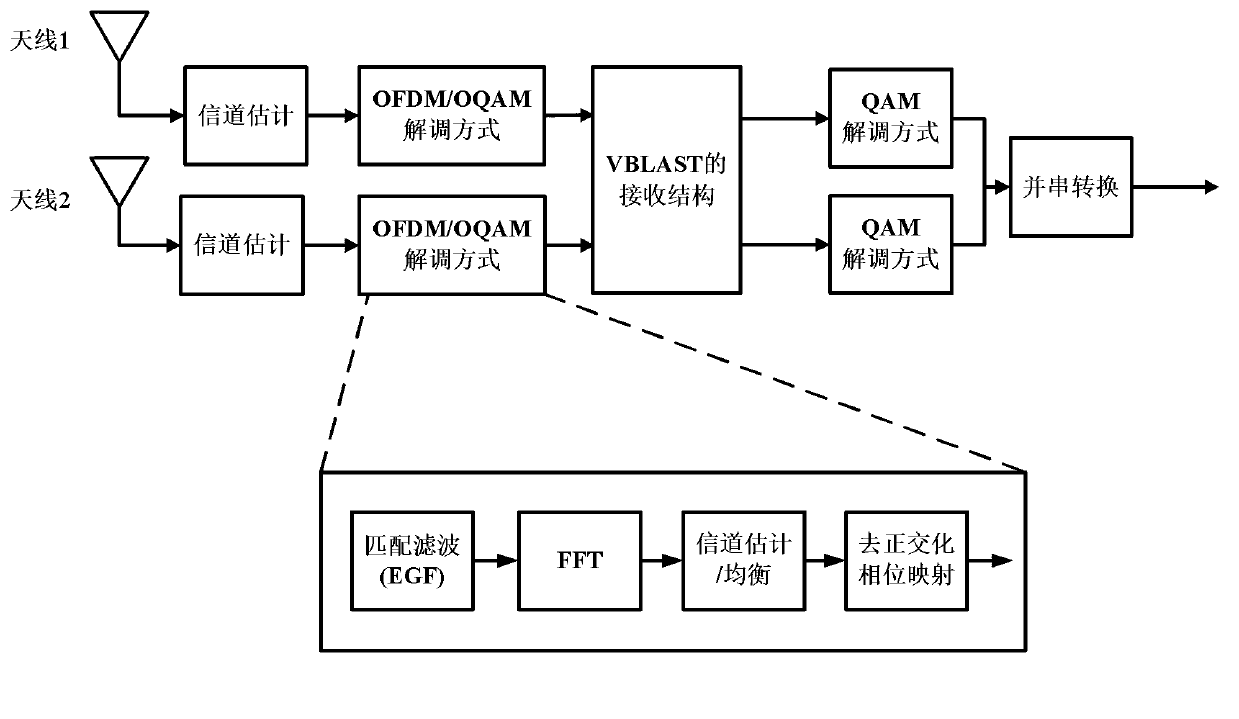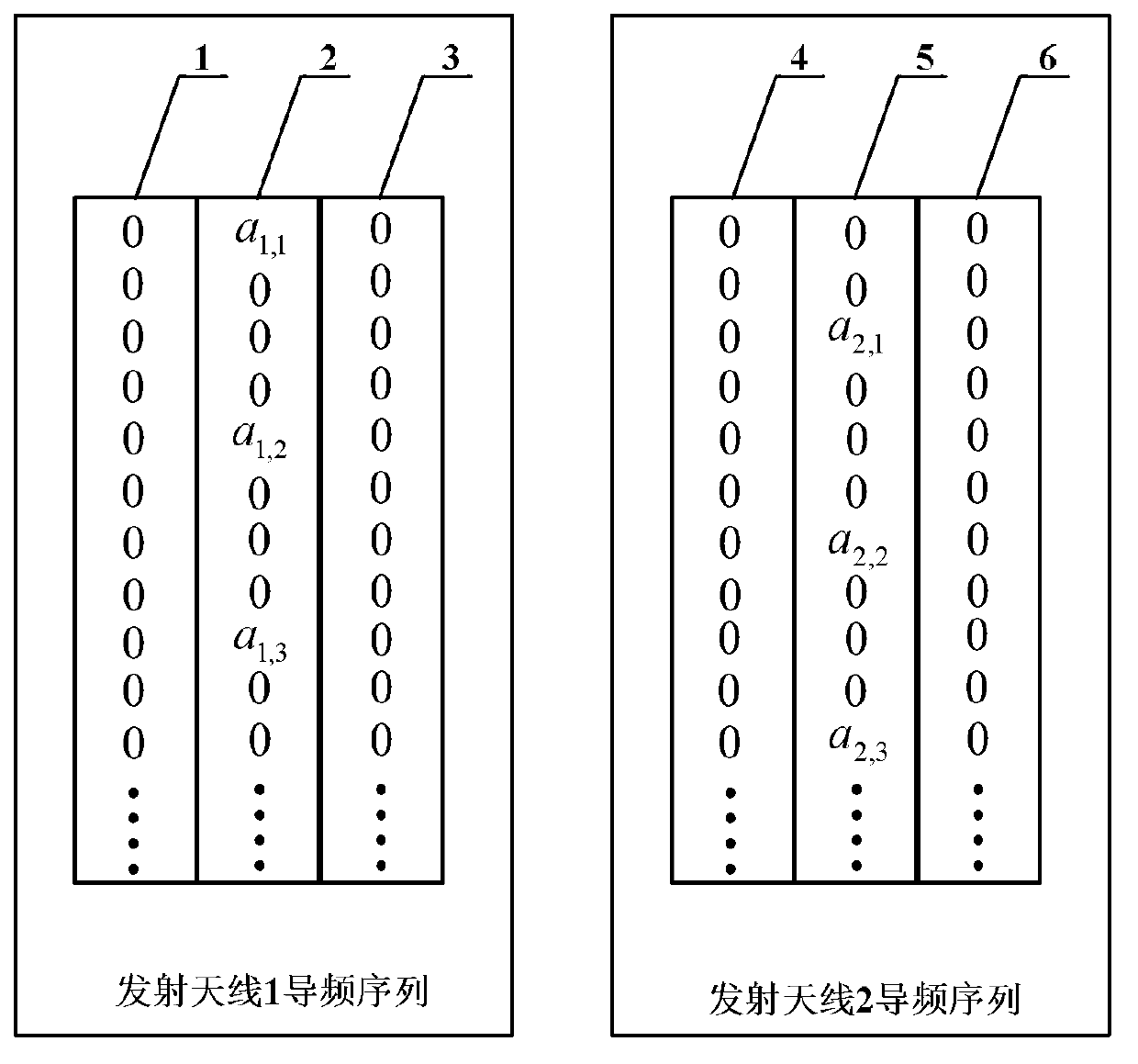Pilot sequence structure in MIMO-OFDM/OQAM (Multi-input Multi-output-Orthogonal Frequency Division Multiplexing/Offset Quadrature Amplitude Modulation) system and channel estimation method
A pilot sequence and channel estimation technology, which is applied in the field of channel estimation, can solve the problem of multipath fading channel destroying the orthogonality characteristics, and achieve the effects of reducing correlation, eliminating channel multipath interference, and reducing linearity requirements
- Summary
- Abstract
- Description
- Claims
- Application Information
AI Technical Summary
Problems solved by technology
Method used
Image
Examples
Embodiment
[0055] Figure 4 It is a schematic diagram of an embodiment of the pilot sequence structure in the MIMO-OFDM / OQAM system of the present invention. Such as Figure 4 As shown, the number of transmit antennas in this embodiment is N=2. In general, the set of candidate symbols Q can be {1,-1} or a set of complex signals with constant modulus. In this embodiment, the set of candidate symbols Q={1,-1}. In the pilot sequence corresponding to transmitting antenna 1, the first symbol sequence 7 and the third symbol sequence 9 are all zeros, and in the second symbol sequence 8, the first symbol a 1,1 =1, the fifth symbol a 1,2 =-1, the 9th symbol a 1,3 =-1, and so on, and the remaining symbols are zero. The 1st, 5th, 9th... symbols in the second symbol sequence 8 are used as pilot signals for channel estimation of the transmitting antenna 1 by the receiving end. In the pilot sequence corresponding to the transmitting antenna 2, the first symbol sequence 10 and the third symbol se...
PUM
 Login to View More
Login to View More Abstract
Description
Claims
Application Information
 Login to View More
Login to View More - R&D
- Intellectual Property
- Life Sciences
- Materials
- Tech Scout
- Unparalleled Data Quality
- Higher Quality Content
- 60% Fewer Hallucinations
Browse by: Latest US Patents, China's latest patents, Technical Efficacy Thesaurus, Application Domain, Technology Topic, Popular Technical Reports.
© 2025 PatSnap. All rights reserved.Legal|Privacy policy|Modern Slavery Act Transparency Statement|Sitemap|About US| Contact US: help@patsnap.com



